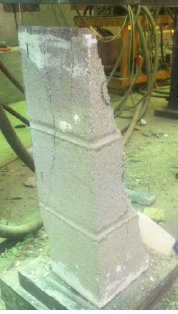1 Professor, Department of Civil, Architectural and Environmental Engineering, Drexel University, Philadelphia, PA, USA, hamidaa@drexel.edu
2 Graduate students, Department of Civil, Architectural and Environmental Engineering, Drexel University, Philadelphia, PA , USA.
3 Research Engineer, Intelligent Infrastructure Systems, Philadelphia, PA, USA.
4 Associate Professor, Department of Civil, Architectural and Environmental Engineering, Drexel University,
Philadelphia, PA, USA.
ABSTRACT
The new IBC seismic provisions are particularly harmful to masonry construction, thus passively promoting the use of competing systems. There is little, if any, basis for such claims in the literature, as masonry bearing wall buildings remain one of the least studied structural systems. This is particularly true for partially grouted reinforced masonry buildings which is a common building system in the eastern United States. Past and current component research demonstrates a significant reduction in shear strength and deformation capacity of partially grouted reinforced masonry as compared to fully grouted construction. There is a need for system-level research to accurately predict the seismic response of this system. NSF has awarded Drexel University, University of Minnesota and University of California-San Diego a grant to study seismic performance and design of partially-grouted reinforced masonry buildings. This project will result in economically competitive design details and retrofit methods to enhance the seismic performance and safety of this system. The outcome of the experimental and analytical investigations will be instrumental in improving code’s design provisions for new construction and in seismic retrofitting of deficient existing buildings. This paper presents results of tests conducted at Drexel University to determine the physical and mechanical properties of ungrouted (hollow) and fully grouted concrete masonry assemblages under axial compression, bed joint shear and diagonal tension needed to analytically predict building response to loading. This paper clearly demonstrates the distinct difference in behavior between ungrouted and fully grouted concrete masonry.
KEYWORDS: concrete masonry, assemblage, hollow, partially-grouted, fully-grouted, reinforced
327.pdf



